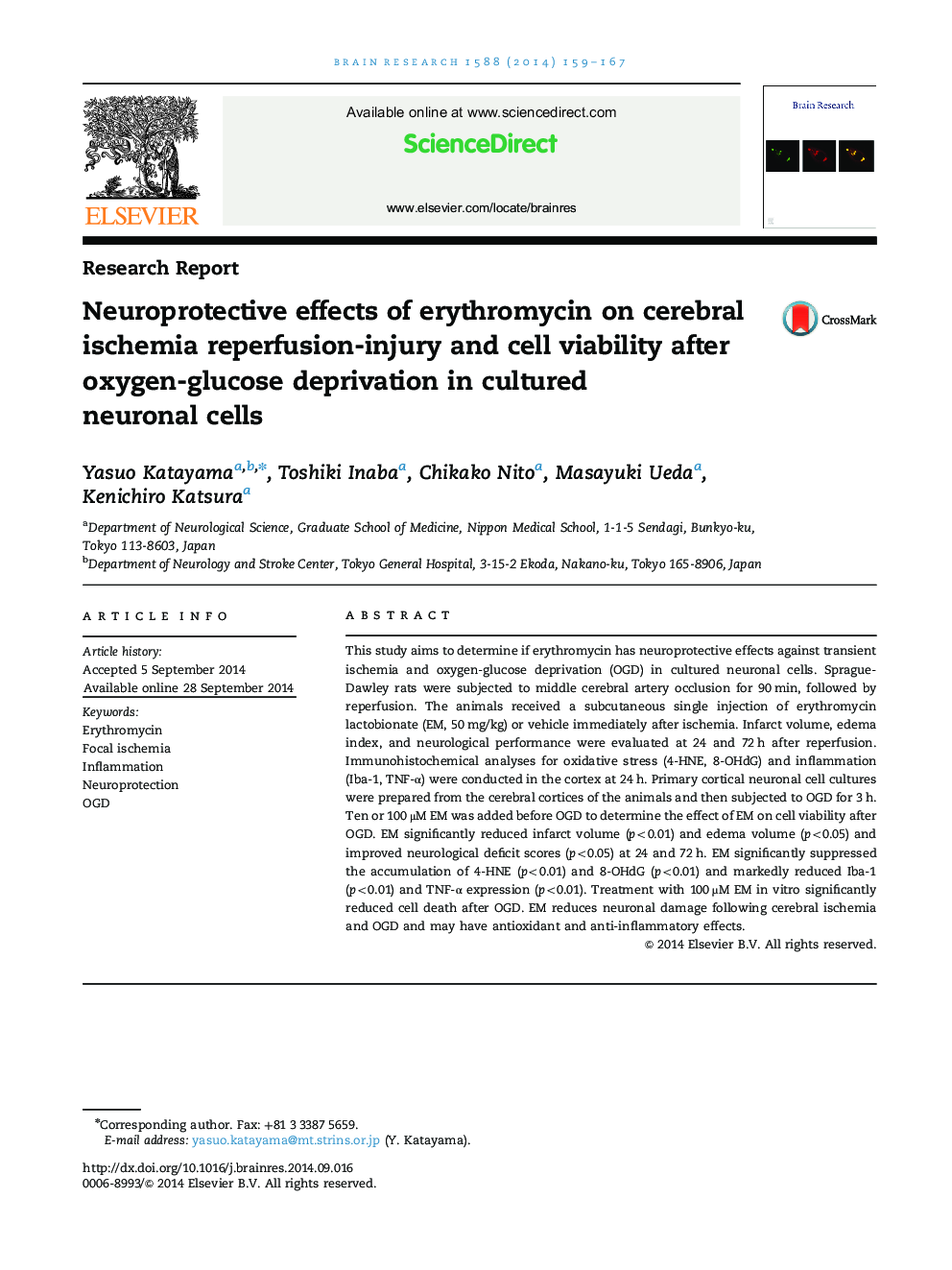| Article ID | Journal | Published Year | Pages | File Type |
|---|---|---|---|---|
| 4324082 | Brain Research | 2014 | 9 Pages |
•EM administered just after cerebral ischemia reduces the infarct and edema volume.•EM improves functional recovery without affecting CBF.•EM shows antioxidant and anti-inflammatory effects in immunohistochemical analyses.•EM also significantly improves the viability of cultured neuronal cells in vitro after OGD.•EM may hold promise as a neuroprotective agent for acute ischemic stroke.
This study aims to determine if erythromycin has neuroprotective effects against transient ischemia and oxygen-glucose deprivation (OGD) in cultured neuronal cells. Sprague-Dawley rats were subjected to middle cerebral artery occlusion for 90 min, followed by reperfusion. The animals received a subcutaneous single injection of erythromycin lactobionate (EM, 50 mg/kg) or vehicle immediately after ischemia. Infarct volume, edema index, and neurological performance were evaluated at 24 and 72 h after reperfusion. Immunohistochemical analyses for oxidative stress (4-HNE, 8-OHdG) and inflammation (Iba-1, TNF-α) were conducted in the cortex at 24 h. Primary cortical neuronal cell cultures were prepared from the cerebral cortices of the animals and then subjected to OGD for 3 h. Ten or 100 μM EM was added before OGD to determine the effect of EM on cell viability after OGD. EM significantly reduced infarct volume (p<0.01) and edema volume (p<0.05) and improved neurological deficit scores (p<0.05) at 24 and 72 h. EM significantly suppressed the accumulation of 4-HNE (p<0.01) and 8-OHdG (p<0.01) and markedly reduced Iba-1 (p<0.01) and TNF-α expression (p<0.01). Treatment with 100 M EM in vitro significantly reduced cell death after OGD. EM reduces neuronal damage following cerebral ischemia and OGD and may have antioxidant and anti-inflammatory effects.
